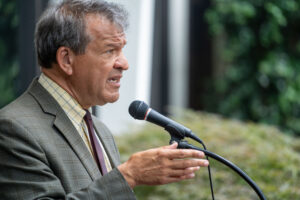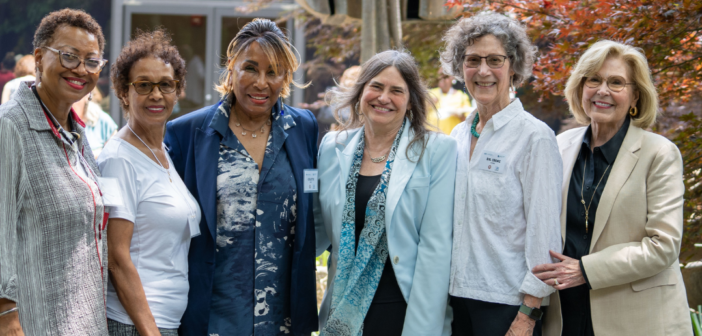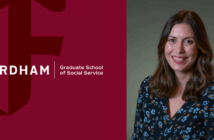According to the World Health Organization, one in six people will be 60 or older by 2030. And while our aging population provides society with abundant wisdom, experience, and value—as we age, many older adults may need to lean on others for care.
However, we’re learning that the supply of caregivers is not meeting the demand of this population. This has resulted in what Colette Phipps, Director of Program Development at the Westchester County Department of Senior Programs and Services, calls a “care crisis.”
Phipps provided the opening remarks for “The Livable Communities Caregiver Coaching Program,” an event held at Fordham’s Westchester Campus on Wednesday, June 5. The event was co-sponsored by Fordham’s Ravazzin Center for Aging and Intergenerational Studies and brought together professionals in the aging field and caregivers from across Westchester County to introduce the Livable Communities Caregiver Guide, a comprehensive document with critical information for caregivers.
Janna Heyman, Ph.D., GSS Professor and Chair of the Ravazzin Center, welcomed the participants, including caregivers, coaches, agency representatives, Commissioner Mae Carpenter, and Colette Phipps. Heyman referred to the National Alliance of Caregiving and AARP report that estimates approximately there are 53 million family caregivers in the U.S. She underscored the important role caregivers play in meeting the pivotal needs of older adults.
“The number of people needing care has risen much more steeply than the number of those available to provide that care,” Phipps said. “We must acknowledge that a ‘care crisis’ exists.”
A Crisis Impacting Everyone
Phipps said the care crisis is something that impacts society at large. In the past, she noted, it had been limited to those with less economic affluence—since women in society’s lower class always had to work and balance career responsibilities with caregiving. Phipps continued that most middle-class families feel the “time bind” that comes with balancing work responsibilities with caring for an older loved one.
And the hours add up. “Family caregivers who were employed full-time outside the home put in an average of 16 hours of unpaid care work [per week], and those employed part-time put in an average of 21 hours,” Phipps said. “A sizable fraction of employed caregivers, whose elders are more severely disabled, put in over 30 hours per week.”
Another inevitable fact is that the caregivers themselves are subject to age. The average age of caregivers in America is over 49 years old, Phipps said, with only 25 percent falling between 18 and 34.
“It’s no wonder caregivers are always seeking additional help,” Phipps said, “which is why the Livable Communities Caregiver Guide was developed.”
Caregiving Coaching Collaboration
Phipps acknowledged Heyman and Dr. Irene Gutheil for their initial development of the Caregiver Coaching Program with the County. The extensive collaboration helped to develop an informed educational intervention of key elements that needed to be included in a Caregiving Coaching model. This model has been the framework for the last 10 years, and it has been a significant part of Livable Communities.

George Latimer
Westchester County Executive George Latimer, FCRH ’74, commended the Westchester County Department of Senior Programs and Services and Fordham University for their work to support caregivers and older adults in Westchester County. Latimer said he is committed to addressing the needs of older adults.
The Livable Communities Caregiver Coaching Guide, handed out to everyone in attendance, contains information for over 60 resources available to caregivers, including housing assistance, transportation, health and wellness, and disability advocacy.
“We are delighted to introduce this robust tool to assist family caregivers in the county,” Phipps said. “With the growing older adult population, we must prepare for the impact this will have on persons providing care for a loved one, neighbor, or friend. That is why various options and information are so important. One thing we know, seldom is one is prepared to become a family caregiver. Rather, those responsibilities are usually thrust upon people without warning. The Livable Communities Caregiver Guide is an invaluable resource for those who have selflessly volunteered their time and the caregiver who may have been unexpectedly recruited for the role.”
Heyman added that this support is crucial to a positive future for caregivers and older adults.



